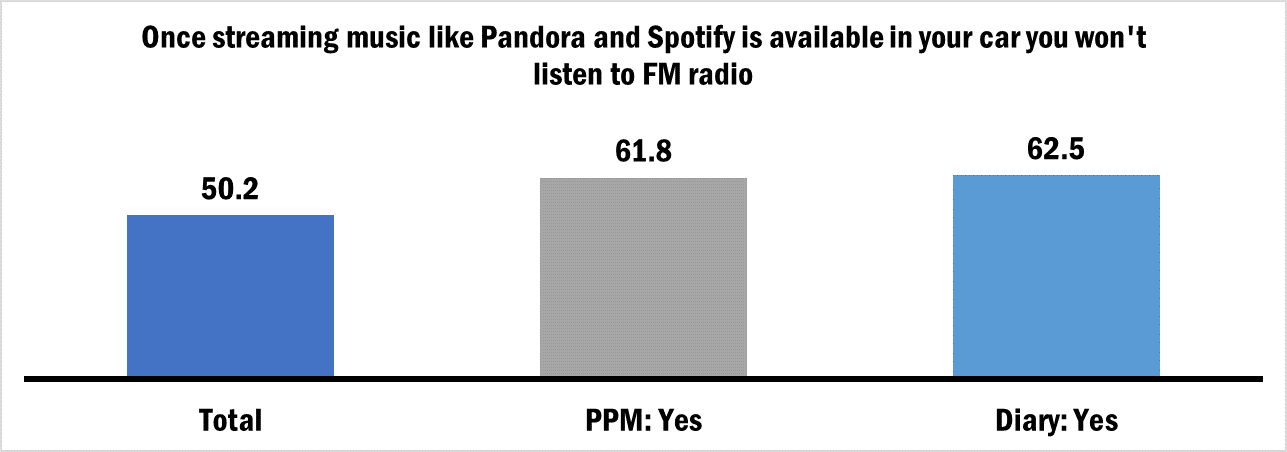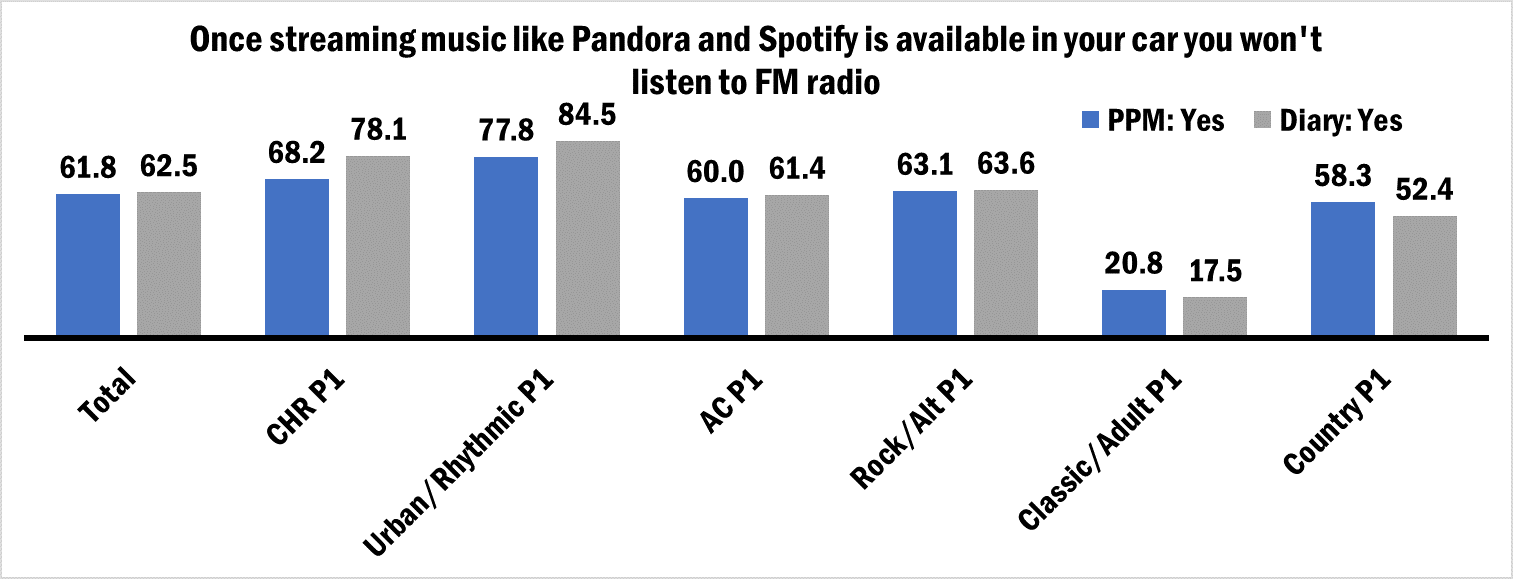When Spotify & Pandora Are on the Dashboard

We’ve said it before, we love ratings respondents. Those likely to play the Nielsen game, in either meter or diary methodologies, tend to be bigger users of media (including radio), tend to be more willing to give up some of their privacy to gain a personal advantage and are more interested in playing contests than the rest of the population.
Across our latest sample of 2,979 persons 14-54 across all PPM markets in the latest NuVoodoo Ratings Prospects Study, compared to the overall sample, nearly a third more in the groups likely to take a meter or a diary agreed that FM radio does a great job playing the kinds of music they like. This takes the number from a majority to just shy of 3/4 in either the meter-likely or diary-likely group.

Radio continues to be well regarded overall and especially by the “radio-actives” who comprise the samples generating the ratings. These numbers are testimony to the great job radio has done and continues to do in delivering well-selected, well-programmed music for its diverse audience. Throughout its history, broadcast radio has adapted to technological and societal shifts, always finding a way to serve the audience.
When the radio stars of the 30’s and 40’s moved over to TV, radio embraced the country’s growing youth culture and created great music programming and the on-air personalities we laud today. While many advancements in technology have been headlined as “the end of radio,” the medium has survived the in-car introduction of 8-track players, cassettes, CD’s and even MP3 players. The newest changes being introduced on car dashboards likely won’t be as devastating as consumers might predict, but it does merit our attention.
Overall, half our sample agreed that once streaming music like Pandora and Spotify is available in their car, [they] won’t listen to FM radio. Given the profile of ratings-likely respondents, we’d hoped that fewer of them would agree with that premise. However, the number rises by about a fifth among either the meter-likely or the diary-likely group.

The agreement that Pandora or Spotify will replace FM listening in the car is without respondents considering the design of new car infotainment systems. As automakers compete to infuse vehicles with the latest technology, FM radio is at best on-par with newer media options and sometimes at a disadvantage – with more menus to navigate – compared to those newer options. We’re not alone in urging radio managers and programmers to test drive lots of the latest models coming out, so that they’re acquainted with what consumers are dealing with in new cars.
Of course, not all music formats are created equal in this regard. While our sample of nearly 3,000 respondents included healthy sub-groups from all music formats, we had to do some careful combining to show reliably-sized groups of format P1’s once we’d narrowed down to the groups likely to play the Nielsen game.

Even among the media-friendly groups comprising the meter-likely or diary-likely respondents, majorities of those aligned with five of six music format types agreed they’d be switching away once they have in-car access to Internet-delivered streaming audio services. Only among the group of ratings-likely P1’s for library-based formats like Classic Hits, Classic Rock, Adult Hits and Variety Hits (labeled “Classic/Adult P1” here) did only a small minority say they’d switch to the new technology.
You’ve may have noticed some format flips in the past few years likely motivated by this line of thinking. While older demos may be kinder to radio, we’d rather not envision a future with a dozen stations per market serving 40-54’s. Radio must develop new programming to engage younger consumers, use weaponry beyond the playlist and embrace the possibilities of today’s technology.




